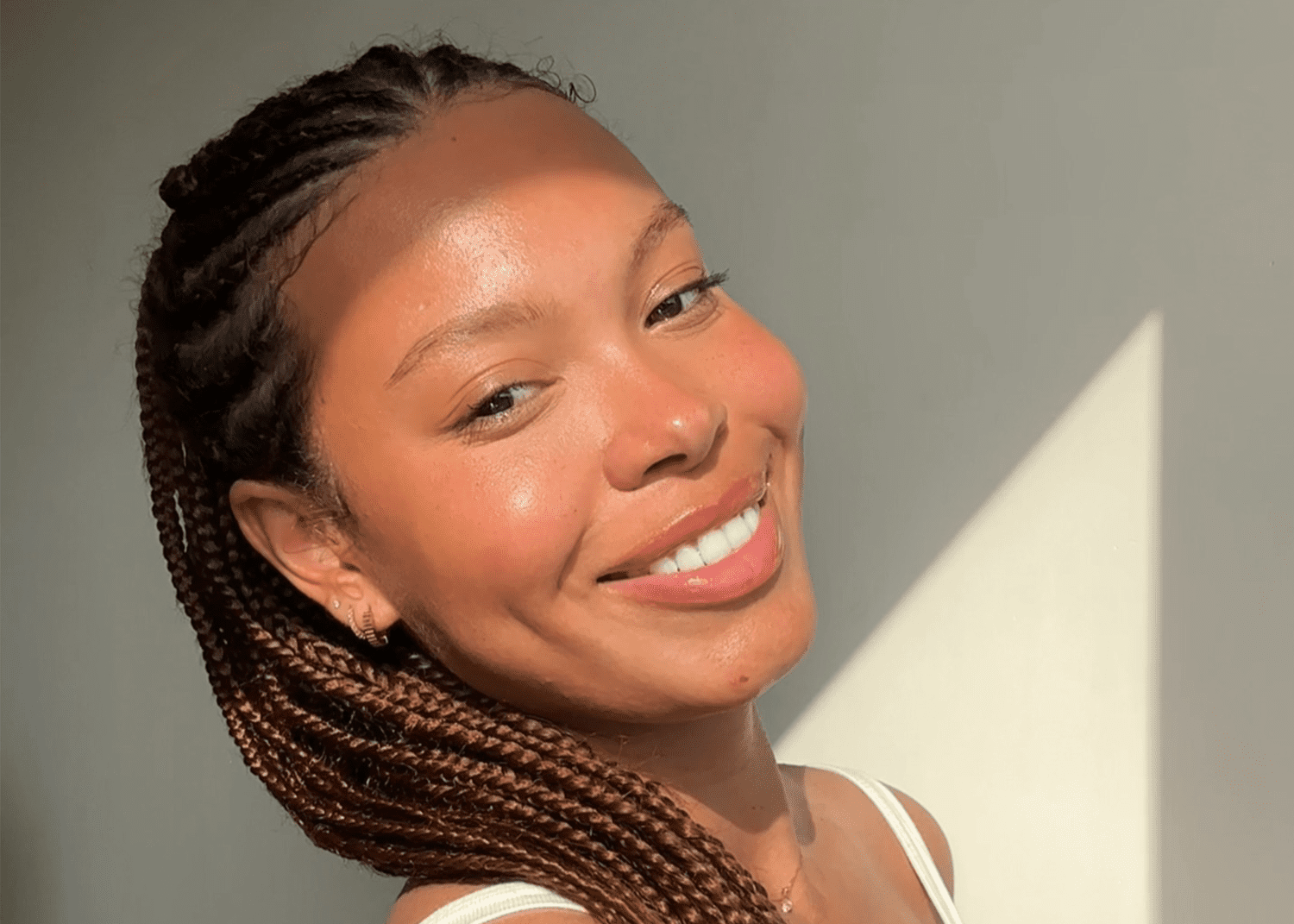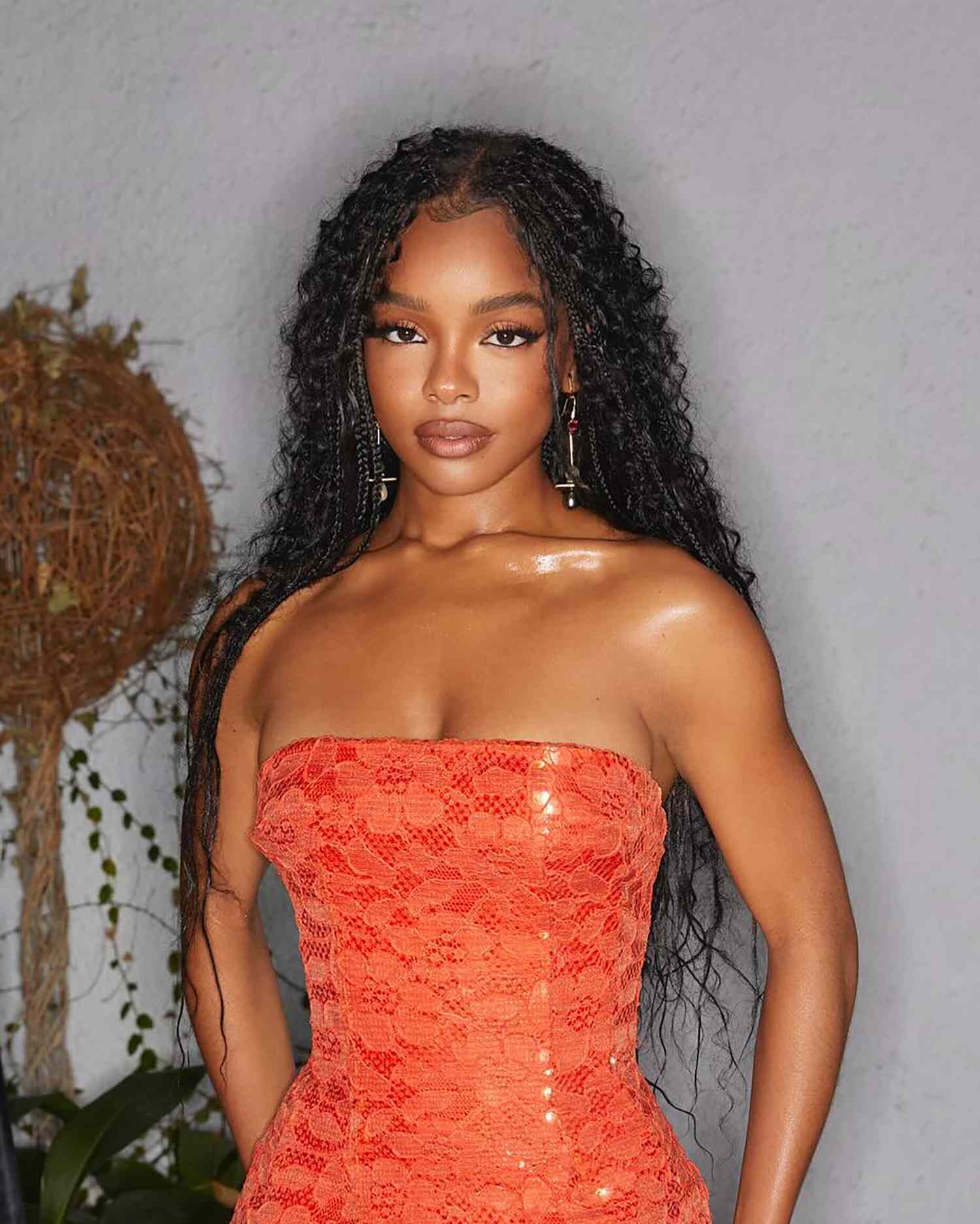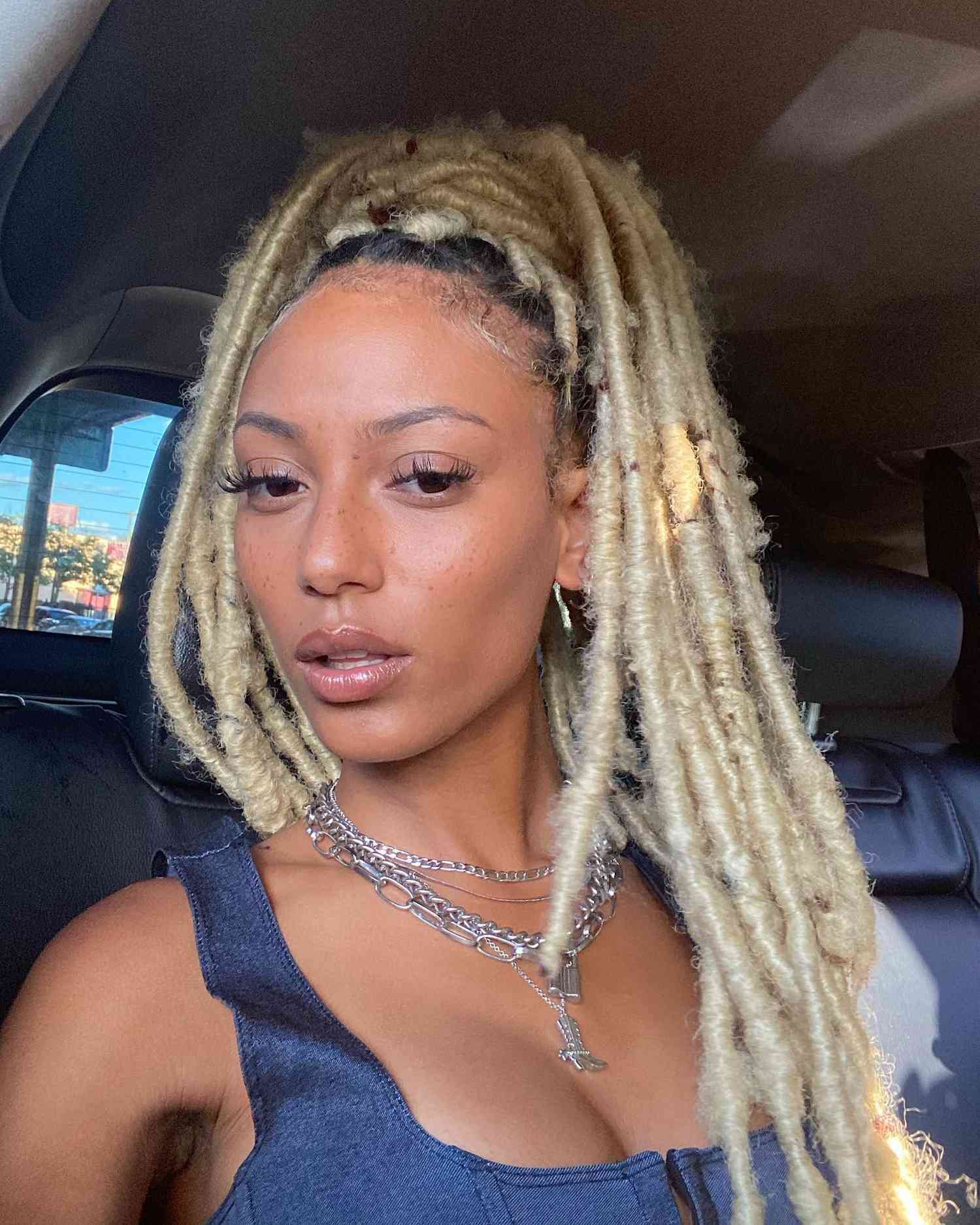Close 
@aureefabienne / Instagram
In This Article
Human Hair Synthetic Hair Deciding Between the Two The Final Takeaway
As anyone who has ever gotten a protective style knows, the process requires plenty of decision-making. Box braids or sister locs? A fun color or a natural hue? A jumbo silhouette or a micro moment? And of course, one of the biggest (and first): Synthetic vs. human braiding hair. While both are great options, they aren’t exactly interchangeable. While some styles are better with (or even require) human hair, others are much better suited to synthetic. Cost and maintenance also come into play when deciding between the two.
We went to the pro hairstylists Monteria Chisholm (AKA Tookie Did It) and Kim Kimble to learn all about the differences between human and synthetic braiding hair. Read on for the ultimate guide.
Meet the Experts
- Monteria Chisholm (known on social media as Tookie Did It) is a hairstylist known for repopularizing the braided baldie.
- Kim Kimble is a celebrity hairstylist and creator of the Kim Kimble Hair Collection by HairUWear.
Human Hair

@marsaimartin / Instagram
What It Is
Human hair is real hair collected from donors that is typically treated and processed for use in wigs, extensions, and braiding, explains Chisholm: “It is praised for its natural appearance, versatility, and longevity,” she adds.
How It's Used
Human hair is used in various protective styles including knotless boho braids, kinky twists, and micro braids because “it offers a natural look and feel and can blend seamlessly with natural hair,” Kimble says.
Maintenance
Human hair requires more care than synthetic. It’s prone to dryness, so it needs to be moisturized regularly with lightweight oils and leave-in conditioners. Additionally, human hair will need to be gently detangled. Chisholm suggests doing this with a wide-tooth comb or your fingers to avoid breakage, starting from the top to the end to ensure that any knots have been removed from the hair. Braids with human hair should be wrapped at night with a silk scarf or bonnet to reduce frizz.
Kimble recommends storing human braiding hair in a clean, dry place when not in use to avoid tangling between styles.
Synthetic Hair

@yathegod / Instagram
What It Is
Synthetic hair is made from artificial fibers designed to mimic the appearance of human hair. It's available in a variety of colors, textures, and lengths.
How It's Used
Synthetic hair is “often used for braided styles such as box braids or cornrows,” explains Kimble. “It holds its shape well, which makes it ideal for creating consistent, pre-styled looks such as curly or straight braids.” Other styles that commonly use synthetic hair include feed-in braids, knotless braids, faux locs or butterfly locs, and Senegalese or Marley twists.
Maintenance
Unlike human hair, synthetic hair requires minimal maintenance. You can and should wash it with a mild shampoo, but "synthetic hair shouldn't be washed excessively as this can cause it to lose its texture," Chisholm says. It can get frizzy after a while, but this can be managed by using mousse and hair spray together.
When installing synthetic hair braids, Chisholm recommends using hot water to seal the ends and keep them neat. Although synthetic hair has a limited life span, it can be re-used for styles such as crochet braids. Storing it in a way that prevents tangling will keep it fresh for longer. If you plan on using synthetic hair more than once, it’s best to avoid any heat exposure as this type of hair doesn’t take too well to heat.
Deciding Between the Two
- Look and feel: Human hair has a more natural look and feel. “It offers more flexibility; you can style, dry, and treat it just like natural hair, which is perfect for those who want a customizable, natural-looking braid style,” Kimble explains. Since synthetic hair is made from fibers, it won’t have that same finish.
- Styling: Some protective styles, particularly boho knotless braids and kinky twists, are better suited to human hair. On the other hand, synthetic hair—which is ideal for knotless braids, crochet braids, faux locs, box braids, and twists—holds curls, weaves, and braids quite well, so you won’t have to worry about your hair unraveling. Just remember that, unlike human hair, synthetic hair doesn’t handle heat well. So if you like to use hot tools, this type of hair may not be right for you.
- Cost: When it comes to cost, it’s safe to say that synthetic hair ticks all the boxes for anyone who wants beauty on a budget: Prices range from $5 to $20 per pack. Human hair, on the other hand, can be quite expensive. “Depending on the quality and length, human hair can cost between $80-$300,” Chisholm says. One of the reasons why human hair is expensive can be attributed to its life span: When cared for properly, it can last anywhere from one to three years.
- Maintenance: For human hair to serve as an investment, adopting a consistent maintenance routine is a must, even if the hair is straight. While synthetic hair can be long-lasting, depending on the brand you use, it generally has a shorter lifespan to go along with the more low-key maintenance.
When choosing between the two, Kimble recommends considering your budget and styling needs. "If you're looking for a budget-friendly, low-maintenance style that looks great but doesn't require frequent upkeep, synthetic hair is a solid option," she says. Chisholm recommends combining human and synthetic hair for a more affordable option while maintaining a natural look.
If you have a sensitive scalp or a scalp condition, you might want to go directly to human hair. “Scalp health is something else you’ll need to consider as synthetic hair can sometimes irritate the scalp,” says Chisholm. “Soaking it in apple cider vinegar before use can reduce this, but human hair might be a more suitable option if you want to reduce the risk.”
The Final Takeaway
Human hair and synthetic hair are both great options for braids. If you're looking for hair that has a natural, lightweight feel and is longer lasting, human hair is a great option. If you're on a budget and seek cost-friendly bundles with a lot of styling flexibility, synthetic hair might be right for you. Ultimately, one hair type isn't better than the other—the final call will simply boil down to your needs and preferences.


